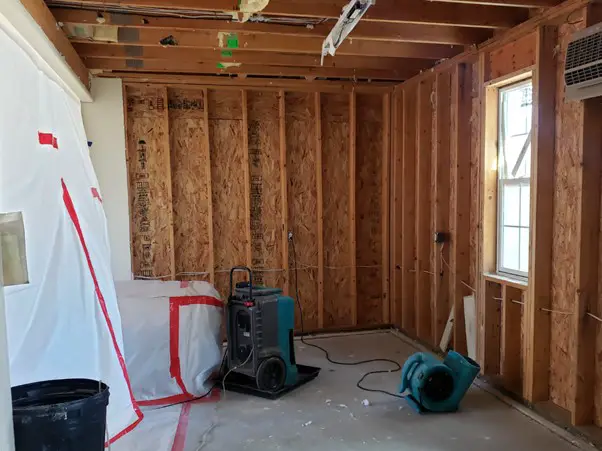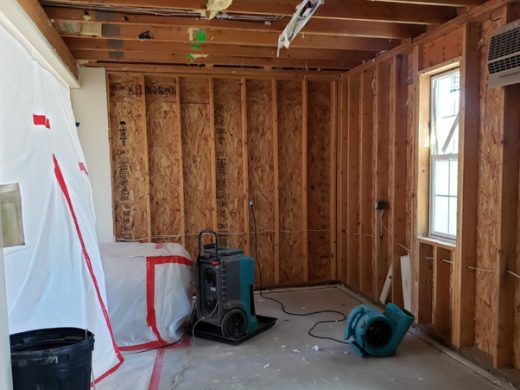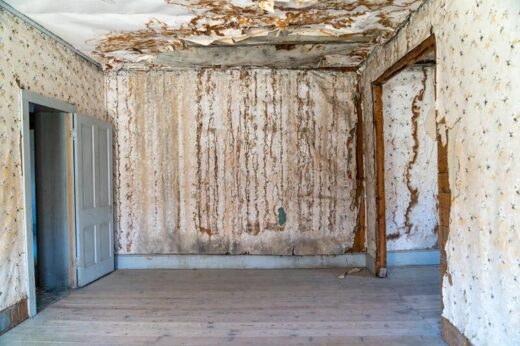Water damage restoration: cleanup, repair & remediation guide, Texas homeowner property advice, USA home maintenance
Water Damage Restoration: Cleanup, Repair & Remediation
13 December 2022
Water damage restoration is returning a property to its former state before water infiltrates and damages it. The usual processes that go into restoration include site examination, water extraction, dehumidification, and complete cleanup. Reconstruction may also be an option, but only if necessary.
An expert in water damage restoration in Denver said that the property would have to go through a thorough inspection by a specialist first before the actual restoration process begins. Following the examination, the inspector will provide the property owner with recommendations on the project’s whats, hows, and whens.
The Importance of Water Damage Restoration
As a homeowner, you must quickly deal with water damage by taking the appropriate steps to mitigate the following issues:
Health Dangers
Mold is an immediate issue when there is water damage since mold growth can begin within hours – see water damage restoration professional. Molds can be dangerous to anyone with chronic health issues like asthma or allergies. Furthermore, if contaminated water seeps into your water supply, it may cause further health concerns such as diarrhea, stomach ache, and fever.
Safety Issues
Prompt water damage restoration is critical since it might compromise the affected property’s structural integrity. Affected walls, ceilings, and flooring can quickly deteriorate without anyone noticing it, risking injury to anyone in your household. Take a look at escondido water damage aspects.
Another critical issue that might arise due to water damage is electrocution. Because water is a conductor of electricity, coming into contact with it can result in significant harm or even death. If water damage has reached your electrical outlets, switch off the power and contact a professional electrician for an assessment.
Financial Difficulties
Water can easily seep into holes, cracks, and niches, which means it can cause significant damage to anything it comes into contact with in your property. The repair costs caused by water damage can significantly be reduced if you act on it without delay. On the other hand, refusing to hire a water restoration company right away can result in more expensive repairs due to additional water damage – see https://deepwaterco.com/.
Legal Consequences
In addition to the immediate health and safety concerns that arise from water damage, there are legal implications as well. Property owners might find it necessary to consult an industrial property damage lawyer if the damage affects their business operations or leads to disputes with insurance providers. Such legal experts can guide you through the complexities of navigating claims and potential liabilities, ensuring that you are adequately compensated for your losses. On the other hand, if you are renting a property affected by water damage, failure to address it promptly may result in legal consequences. Your lease or rental agreement might have clauses that hold you accountable for any damages resulting from your negligence.
How Long Does It Take To Repair Water Damage?
Restoration completion times will vary depending on how long it takes affected areas to dry. On average, it takes 72 hours for a room to dry out and be suitable for rebuilding. The complete water damage restoration process might take 1-2 weeks. Because the damaged areas must be entirely dry before a restoration contractor can undertake the necessary repairs, the timeframe can be extended by a few weeks.
While it’s reasonable that many property owners want their lives to return to normalcy as soon as possible after a disaster, each repair job is unique due to the magnitude of the damage and the materials involved. Moreover, the seriousness of the situation is often more than meets the eye.
Water Damage Restoration Procedures
When undertaking repair work, water damage restoration professionals often follow these five steps:
- Damage Examination
Inspecting the property thoroughly helps determine the water’s entry points, the depth of the damage and contamination, and the repair costs. This process can be tricky, especially if the water infiltrates through several entry points. As mentioned above, a complete inspection would have to be done first before the actual work could begin.
- Removal of Standing Water
Removing any standing or stagnant water is critical when an area of the house has been flooded. Extractors such as submersible pumps and industrial vacuums are commonly used in this operation.
Wet places can be dried further utilizing portable dry/wet vacuums once all standing water has been removed. This is because leftover surface water can still be found behind walls and beneath floors, even after cleaning. The restoration professional may also use a moisture monitor or a thermal infrared camera.
- Dehumidification and Drying
This stage of the restoration procedure may take longer than removing standing water. This is especially true if the water damage is classified as Class 3 or 4, requiring the removal of portions of the walls or flooring.
When drying and dehumidifying the afflicted portions of the home, the professional will most likely employ the same equipment used for water extraction. They would also have to open doors and windows to enhance air circulation in the affected regions.
- Sanitation and Cleaning
Because this procedure is dangerous, the specialist must wear personal protective equipment (PPE) such as an N95 mask, gloves, and rubber boots. The same extraction and dehumidification equipment will be used here, typically in conjunction with an antimicrobial agent, to completely clean and disinfect all surfaces.
- Restoration and Repair
Carpet padding, low- to medium-density trim boards, and drywall built below the flood line will all be removed. Carpet cleaning is achievable in some circumstances; however, it is preferable to replace them.
Depending on the type of water damage, wooden trim boards can be utilized in place of drywall. If a natural disaster causes water damage, it is usually advised that the property be rebuilt.
Water damage restoration fix Conclusion
Many people believe that water damage restoration is an easy process. It is far from the truth because the procedure is complicated and dangerous. Additionally, a restoration project cannot be completed in a few days due to its complexity. This is why property repair should be left to specialists.
Comments on this guide to Water damage restoration: cleanup, repair & remediation article are welcome.
Water / Floods Articles
Water / Floods Posts
Finding the best water treatment experts
Water damage from leaks: construction lawsuits
Water damage cleanup and repair service
Water damage restoration professional tips
How to recover and clean up after water damage
Architects and Architecture
Architects and Architecture by Type – architectural selection below:
Comments / photos for the Water damage restoration: cleanup, repair & remediation advice page welcome







